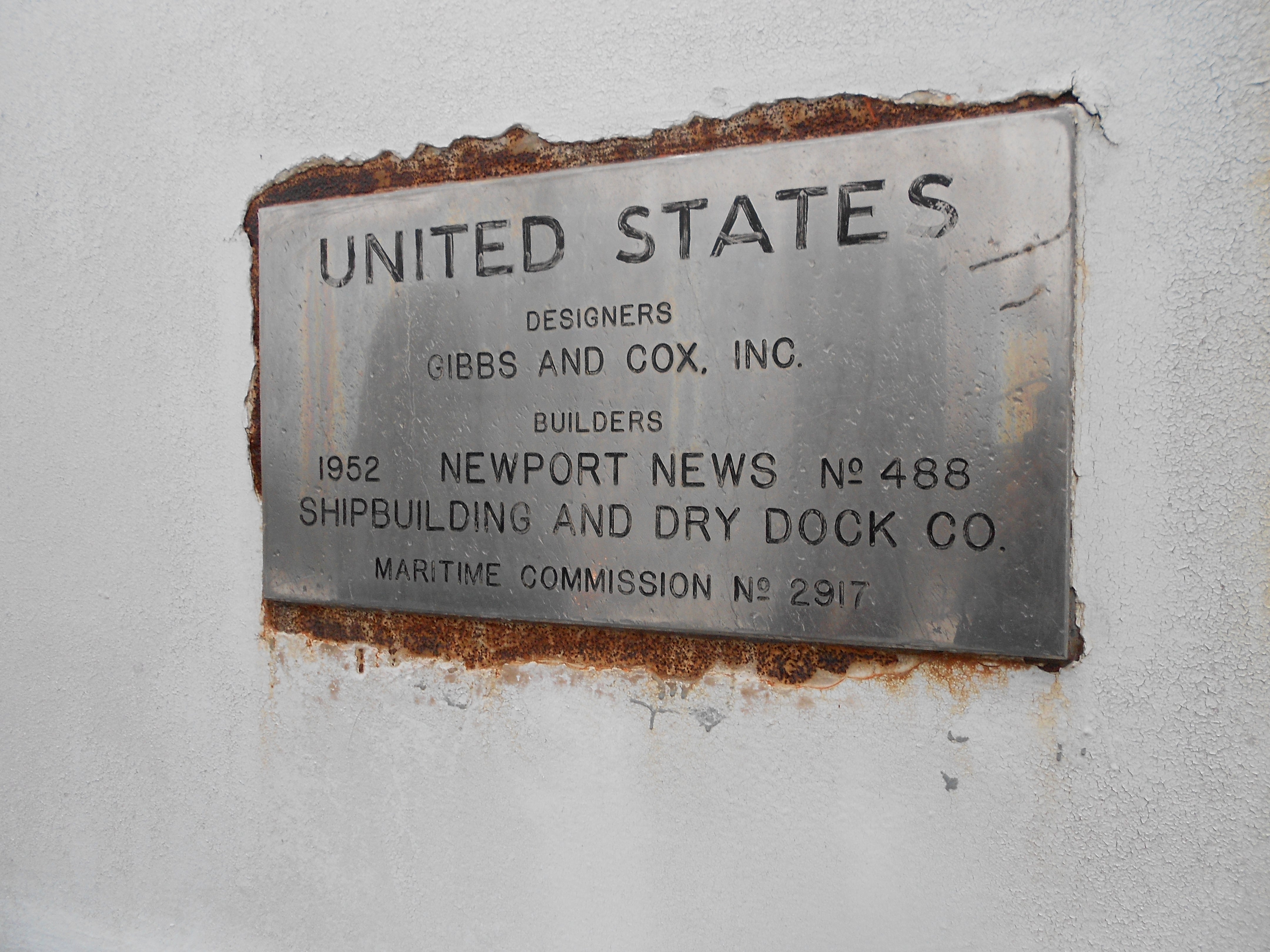Kicking off the Year in Review. Our tarnished jewel on the Delaware
Last summer, I phoned my grandmother Judy from the decks of the SS United States. It was July 1, 2010, the happy day when Gerry Lenfest’s grant to the SS United States Conservancy was announced to the public. A strong wind whipped the American flag flying proudly from her radar mast.
My grandmother, 94 years old, had lost most of her hearing, and so I had to speak very slowly: “Grandma, I’m standing where you and Grandpa once stood fifty years ago! I am on the SS United States.”
This past Thanksgiving, I noticed a new picture hanging in the hall of my parents’ house. A nattily dressed middle-aged couple strides onboard an ocean liner sometime around 1960. My grandmother Judy beams at a steward as he greets her on the landing. She is wearing a blue dress and a pearl necklace. My grandfather Joe is behind her on the gangplank, looking solemn, even contemplative. He is wearing a brown sport jacket, with a red ascot wrapped around his neck. There isn’t much of the room visible, but the linoleum floors are black and gleaming.
My grandparents traveled on a number of the big liners. Could this be from their trip on the SS United States?
My grandmother now suffers from severe memory loss, so I passed the photo along to my friend Joseph Rota, who served as ship’s photographer in the late 1950s.
His response: hard to tell by looking at the small amount of the entry foyer visible. The first smell you noticed when you came aboard the SS United States was the aroma of floorwax, he said. The ship was kept so clean that you could supposedly eat off the decks. The steward greeting them on the landing is dressed in a bedroom steward uniform. Typically the bellboys greeted passengers.
He then added: “Wait, I think that bedroom steward is Aponte!”
There was something else in the picture that stuck out. In her left hand, my grandmother is carrying a blue-and-white Pan Am bag. And it was the Pan-American Airlines that helped bring down the SS United States and ships like her.
The SS United States entered service in 1952, and captured the Atlantic speed record with an eastbound crossing time of 3 days, 10 hours, 40 minutes, at an average speed of 35.59 knots, or over forty miles an hour. Only six years later, the first transatlantic commercial jets took to the skies. Able to cross the Atlantic in only six hours, the whine of their engines sounded the death knell for the great liners.
In 1969, the SS United States, her high speed irrelevant, was taken out of service. Since then, she suffered from stripping, neglect, and has come close to being sold for scrap several times.
After months of complex negotiations, the SS United States Conservancy took title to the rusting SS United States in February 2011, saving her from certain dismantling on a Gulf Coast beach. The $5.8 million grant from H.F. “Gerry” Lenfest allowed the nonprofit organization to purchase the historic ocean liner for $3 million, and the remaining funds to keep the ship at her current berth until the end of 2012.
Rarely has an historic preservation group been given such an opportunity to change history. One of the Conservancy’s lawyers called the nonprofit “the dog that caught the car.” It’s as if a benefactor had halted the demolition of New York’s Penn Station in 1960 and given advocates for its preservation a chance to redevelop it. She epitomizes an era when America built things. Great things. We had just won World War II, and were the greatest industrial superpower on earth. Why not build the finest, fastest, safest, most beautiful ship in the world? No need for outsourcing. All 48 states at the time supplied parts and materials for her construction.
Over the past four years, as I have written about this touchstone of American history, many people have come up to me to tell me about their connection to the ship. Among them:
“I traveled aboard her as a little girl. My father was in the Air Force and we were being stationed overseas.”
“My grandparents met on that ship!”
“My husband and I took our honeymoon on the SS United States. We traveled with the Annenbergs.”
“My mother designed the propellers. She was the only woman engineer on the Gibbs & Cox design team.”
“I immigrated to America on her after fleeing Communist East Germany.”
As the new owners, the SS United States Conservancy is racing against time to redevelop the ship as a stationary attraction, raising funds both the general public and private sources. New York is the most likely future destination for the ship; Philadelphia was ruled out after feasibility studies showed that there is not enough critical mass on the Delaware waterfront for the ship to support itself as a hotel-convention center-casino-museum complex.
The coming year, 2012, marks the sixtieth anniversary of the ship’s triumphant maiden voyage. It is also be the year that determines whether or not the Conservancy will be successful in what is arguably the most ambitious historic preservation project in recent years.
The Conservancy is developing a new fundraising initiative called “Paint the Big Ship,” which allows people to purchase segments of a digital ship and share stories, images, and other media. The goal of this micro-investing project is to raise the $15 million needed for the ship’s exterior renovation. A new entity, the SS United States Redevelopment Project, is managing the for-profit portion of the ship’s renovation.
Should the SS United States Conservancy fail to come up with a viable redevelopment plan, it will be forced to sell the ship for scrap when Lenfest’s funding runs out next November.
During her 17 years of service, the ship carried over a million passengers, and a thousand crewmembers on each of her 400 voyages. One day, millions more Americans may be able to walk the decks of America’s ship of dreams.
Steven B. Ujifusa is an author living in Philadelphia. He has covered the SS United States for PlanPhilly since April 2007. His first book, A Man and His Ship: America’s Greatest Naval Architect and His Quest to Build the SS United States, will be published by Simon & Schuster in July 2012, on the sixtieth anniversary of the ship’s maiden voyage. Visit his publisher’s webpage.
Coming Wedenesday: The year in Zoning Reform.
WHYY is your source for fact-based, in-depth journalism and information. As a nonprofit organization, we rely on financial support from readers like you. Please give today.




















